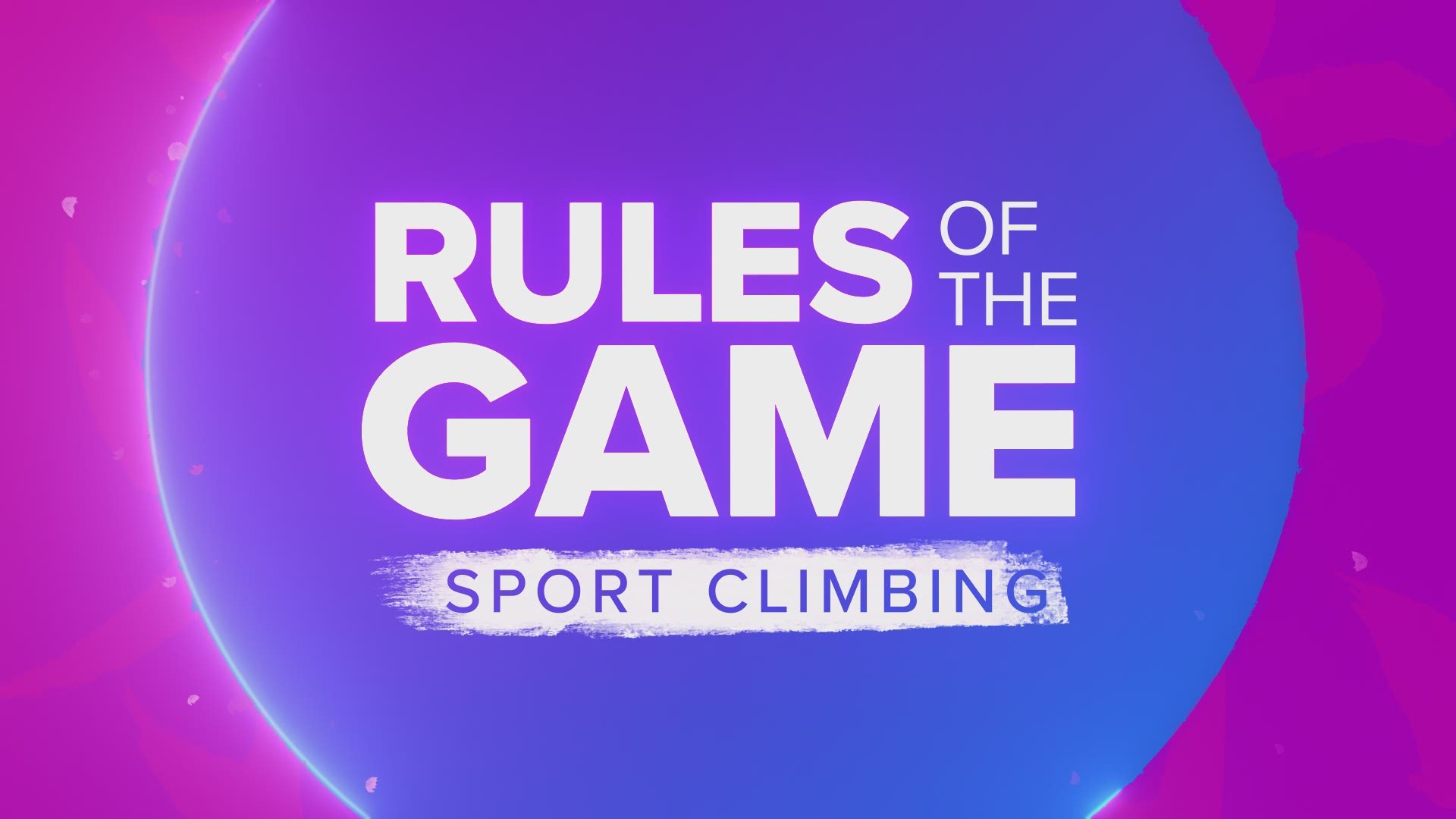Sport climbing is one of five sports making their debuts at the 2020 Olympics in Tokyo. It brings a popular recreational sport to its biggest stage ever.
Olympic sport climbing will combine three disciplines: speed, bouldering, and lead.
Speed
Think of this a sprint on all fours, but doing it vertically. Two climbers go head-to-head on identical courses to scale a 49-foot-high wall. Men tend to do this in five to six seconds while women do it in seven to eight seconds. And don't jump the gun. A false start is an immediate disqualification.
Bouldering
Climbers have four minutes to try and scale as many fixed routes as possible. The wall is 13-feet high and the routes vary in difficulty -- some of the holds are so small, they can only be grabbed by the fingertips. It’s also possible for a climber to be hanging by just their hands.
Once the climber grabs the “top” hold on each route with control, then they have completed it. They come down and start again. The total score is based on the number of “tops” they climber reaches and the number of “zones” (an area midway up the wall) they reach.
To make it fair, climbers who are waiting their turn are not allowed to watch other climbers ahead of them.
Lead
Scaling a 49-foot-high wall, the climbers try to get as high as they can in six minutes. They use safety ropes for this and attach the ropes to quickdraws, or carabiners, at various points along the climb. If they attach their rope to the quickdraw at the top, they finished the climb. If they fall, the last quickdraw they attached their rope to is their final height. If multiple climbers reach the top, the one with the fastest time is declared the winner. Just like with bouldering, none of the climbers are allowed to see their competitors’ attempts.
The scores from these three disciplines will be combined to determine the medalists. There is one division for men and one for women.

